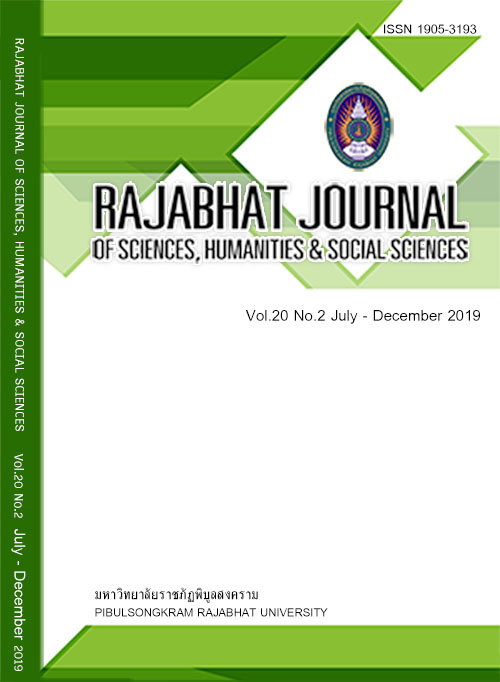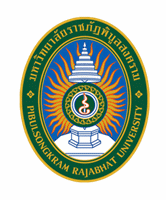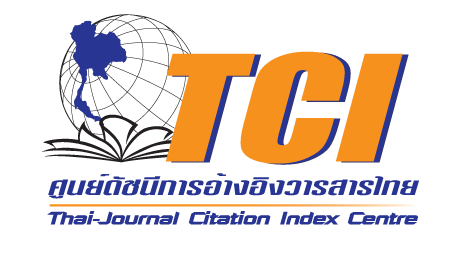ภาวะสองรูปแบบทางเพศและอัตราส่วนเพศของแมลงหางดีด XENYLLA SP.
คำสำคัญ:
ภาวะสองรูปแบบทางเพศ, อัตราส่วนเพศ, แมลงหางดีดบทคัดย่อ
โดยทั่วไปขนาดและรูปร่างของสัตว์จะถูกใช้ในการจำแนกเพศ ภายใต้สภาวะห้องทดลองที่อุณหภูมิ 25-28 องศาเซลเซียส แมลงหางดีดที่เลี้ยงในหลอดพลาสติกที่มีซับสเตรทที่ผสมด้วยปูนพลาสเตอร์และผงถ่านถูกนำมาสังเกตภาวะสองรูปแบบทางเพศ ซึ่งสอดคล้องกับสมมติฐาน พบว่าแมลงหางดีดทั้งสองเพศถูกแยกด้วยขนาดร่างกาย โดยแมลงหางดีดเพศเมียจะมีความยาวลำตัวและขนาดใหญ่กว่าเพศผู้ นอกจากนี้รงควัตถุที่อยู่บนลำตัวและสีลำตัวยังเป็นลักษณะที่เด่นในการแยกเพศของ Xenylla sp. โดยเพศเมียจะมีลำตัวสีเหลือง ขณะที่เพศผู้ที่ช่วงอายุเดียวกันจะมีลำตัวสีเข้มเนื่องจากมีการกระจายตัวของรงควัตถุตามลำตัว สำหรับอัตราส่วนเพศ พบว่า เพศผู้มีจำนวนมากกว่าเพศเมียในอัตราส่วน 1.63: 1 ตามลำดับ จากการศึกษานี้พบว่า Xenylla sp. เป็นพวกเพศแยก ไม่พบการสืบพันธุ์แบบไร้การปฏิสนธิและสามารถใช้ขนาดร่างกายและสีในการแยกเพศ
เอกสารอ้างอิง
Chahartaghi M. Scheu S, Ruess L. Sex ratio and mode of reproduction in collembolan of an oak-beech forest. Pedobiologia. 2006; 50: 331-340.
Chahartaghi M. Maraun M. Scheu S, et al. Resource depletion and colonization: a comparison between parthenogenetic and sexual collembolan species. Pedobiologia. 2009; 52: 181-189.
Chernova NM. Patapov MB, & Savenkova YY. Ecological significance of parthenogenesis in collembolan. Entomological Review. 2010; 90(1): 23-38.
Elzinga RJ. Fundamental of Entomology. Upper saddle river: Prentice Hall; 2000.
Emlen DJ. Hunt J. & Simmons, LW. Evolution of sexual dimorphism and male dimorphism in the expression of beetle horn: phylogenetic evidence for modularity, evolutionary lability and constraint. The American Naturalist. 2005; 166: S42-S68.
Goto HE. Facultative parthenogenesis in Collembola. Nature. 1960; 188: 958-959.
Hopkin SP. Biology of the Springtails (Insecta: Collembola). New York: Oxford University Press; 1997.
Humason GL. Animal tissue Techniques. San Francisco: Freeman; 1979.
Mari-Mutt JA. Redescription of Willowsia jacobsoni (Börner), an entomobryid with conspicuous sexual dimorphism (Insecta: Collembola). The Journal of Agriculture of the University of Puerto Rico. 1981; 65: 361-373.
Palacios-Vargas JG. A new species of Denisiella (Collembola: Sminthuridae) from Panama and new records for D. sexpinnata (Denis, 1983). Zootaxa. 2007; 1637: 63-68.
Palacios-Vargas JG, & Castaño-Meneses G. Importance and evolution of sexual dimorphism in different families of Collembola (Hexapoda). Pesquisa Agropecuária Brasileira. 2009; 44(8): 959-963.
Petersen H. Sex-ratios and the extent of parthenogenetic reproduction in some collembolan populations. In: R Dallai (Ed.), First International Seminary on Apterygota. Siena: Accademia delle Scienze di Siena detta de’ Fisiocritici. 1978: 19-35.
Ramel G. Baquero E, Jordana R. Biodiversity of the Collembola fauna of wetland Kerkini (N. Greece), with description of the sexual dimorphism of Entomobrya atrocincta Schött 1896 (Collembola: Entomobryomorpha). Annales de la Société Entomologique de France. 2008; 44: 113-128.
Sharma GD, Metz LJ. Biology of the Collembola Xenylla grisea Axelson and Lepidocyrtus cyaneus f. cinereus Folsom. Ecological Entomology. 1976; 1: 209-212.
Skarzynski D. Parthenogenesis in Ceratophysella succinea Gisin, 1949 (Collembola: Hypogastruridae). Polish Journal of Entomology. 2002; 71: 323-326.
Vollrath F. Parker, GA. Sexual dimorphism and distorted sex ratios in spiders. Nature. 1992; 360: 156-159.
Youdeowei A. A laboratory manual of entomology. New York: Oxford University Press; 1977.
ดาวน์โหลด
เผยแพร่แล้ว
รูปแบบการอ้างอิง
ฉบับ
ประเภทบทความ
สัญญาอนุญาต
Each article is copyrighted © by its author(s) and is published under license from the author(s).










